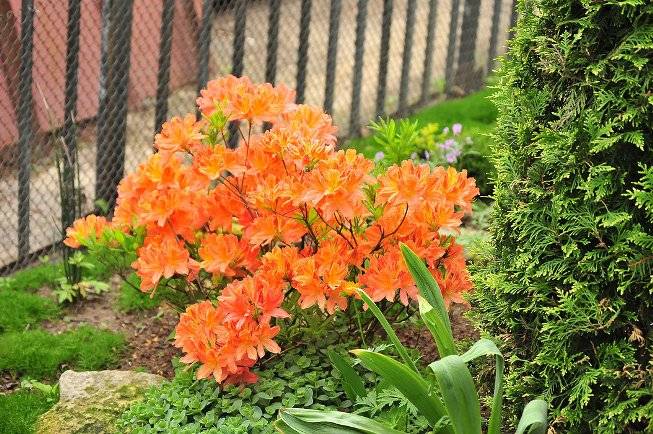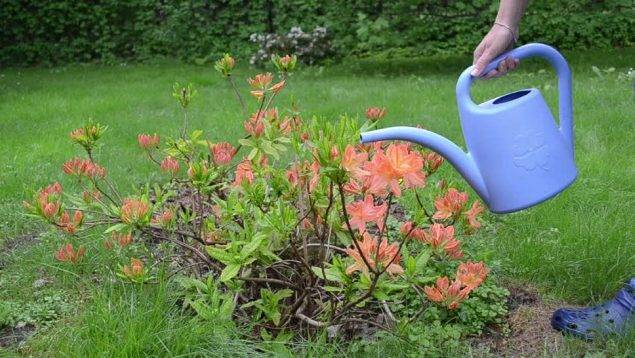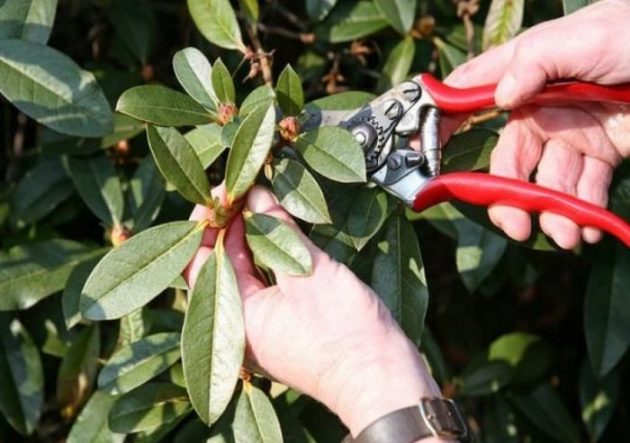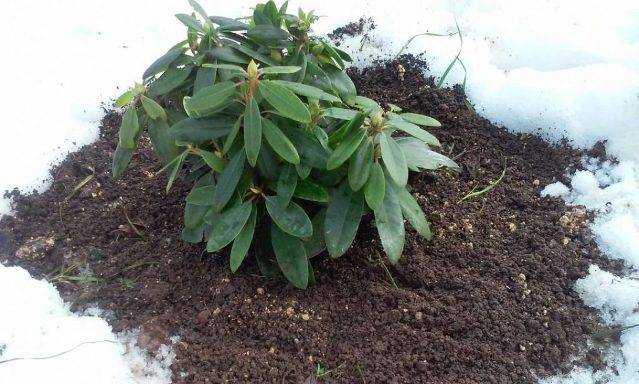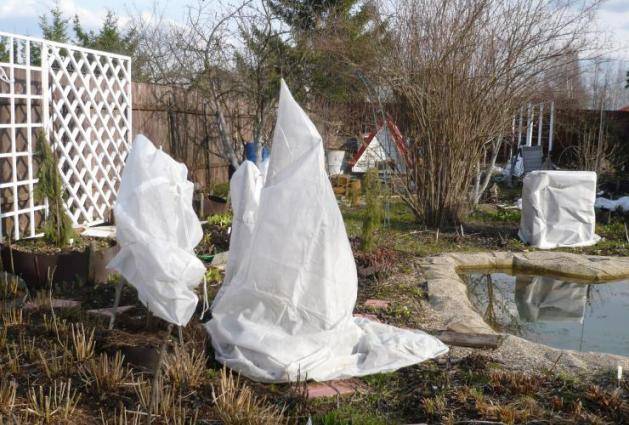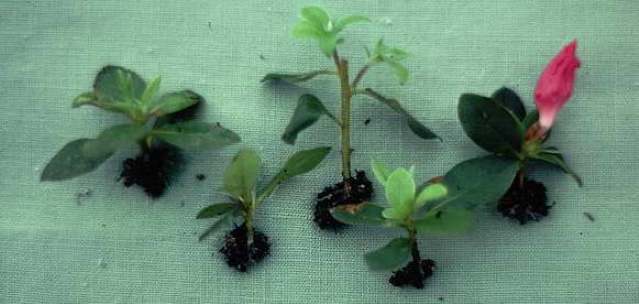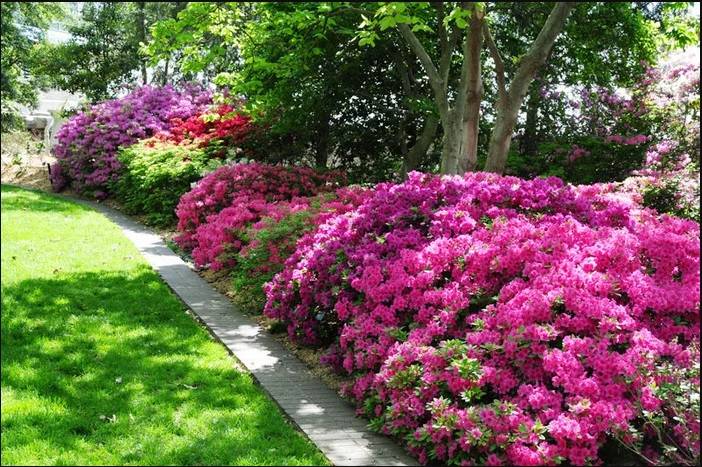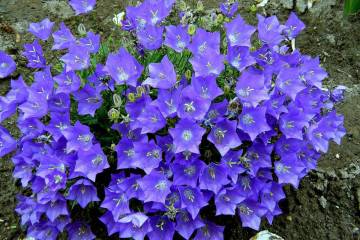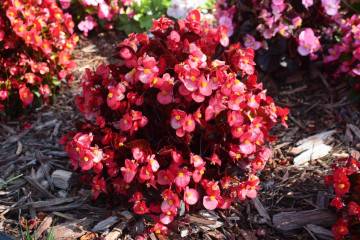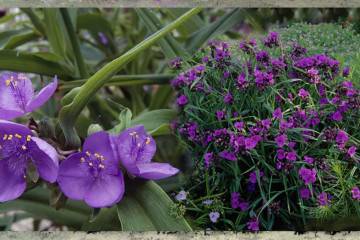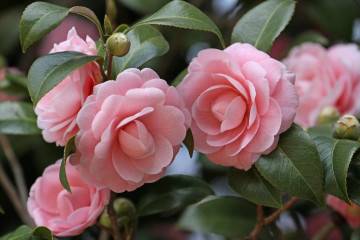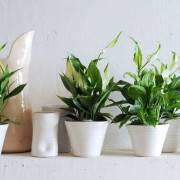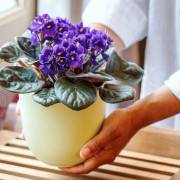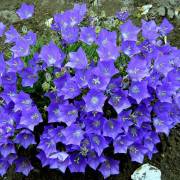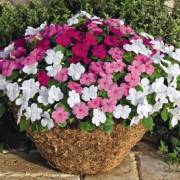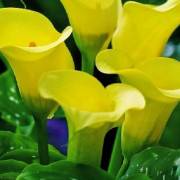Azalea garden - growing and care on the street
Content:
An abundantly flowering shrub called azalea is becoming more and more popular every day. It looks very nice in any garden area and indoors. Breeders continue to experiment and create new varieties. And gardeners, sparing no time, cultivate an overseas flower, although they realize that azalea is demanding on growing conditions.
Garden azalea - what is this flower
The area of growth of culture - eastern countries such as China, Korea, Japan. Some species grow in the Himalayas, Africa, North America and Australia, but the northern Caucasus has not been spared either.
Short description
Slow-growing perennial bushes in the recent past were attributed to the genus of rhododendrons, but recently information has appeared in reference books that the azalea belongs to the Heather family.
As practice shows, such species as grow well in the Middle Lane:
- deciduous azalea is a shrub reaching up to 3 m. It pleases the eye with rich colors of flowers from 10 days to 2 months. There are so many flowers that green foliage is almost invisible;
- Japanese azalea is a medium-sized compact shrub. It grows slowly. Flowering lasts from 20 to 90 days.
Plant varieties
The most popular are the following frost-resistant varieties:
- Chanel. Slow growing deciduous shrub. Withstands frosts down to -25 ° C. Loves the sun or light partial shade, acidic moist soil types. The flowers are fragrant creamy pink. Leaves slightly pubescent, 6–12 cm in size;
- Freya. Compact, hardy shrub. It grows up to 1.5–2 m. Terry tubular flowers, reaching 4–5 cm in diameter, have a golden-pink tone. Flowering begins in the second decade of June;
- Klondike. A fast-growing shrub that tolerates -30 ° C well. Prefers sun or light partial shade. Blooms profusely with beautiful bells of bright colors. Orange buds bloom into golden yellow flowers;
- Tunisia. Tall, deciduous shrub with a branched crown. Withstands frosts down to -27 ° С. The bush loves the sun, but is loyal to partial shade. Needs moist acidic soil. Fragrant flowers of a dark red tone with orange spots. Flower diameter 4 cm;
- Golden Lights. Azalea Golden Lights is a deciduous shrub with a rounded crown. Frost resistance up to -27 ° С. Loves the sun, acidic and moist, drained soil. Funnel-shaped flowers. Light orange wavy petals with spots 5 cm in diameter;
- Golden sunset. Low flowering shrub. Calmly tolerates a thermometer reading of −27 ° C. Numerous yellow flowers - fragrant and large bells with apricot spots on the petals;
- Bright orange Gibraltar. A dense bush of azalea of medium height (1.5 m). Frost-resistant option. Survives at -26 ° C.It has dark green shiny leaves and red-orange flowers with curved petals.
Planting garden azaleas in the open field
A well-chosen azalea garden site and healthy soil for planting are the keys to success in growing a flower.
Seat selection
A well-lit place is chosen, but without direct sunlight. Garden azalea prefers areas under the crown of spreading trees.
The area is suitable next to high fences, buildings that protect from wind and drafts. For outdoor azalea growing near the house, the north, west or east side of the site is suitable.
How to prepare the soil and flower for planting
The azalea is planted in the spring before sap flow begins. If the moment is missed, the procedure is postponed to September.
A loose and structured substrate is prepared. To do this, combine the following elements in equal quantities:
- land dug from the planting hole and freed from turf;
- peat;
- sand;
- humus.
The ingredients are mixed and the resulting composition is poured into the planting hole on top of the previously placed drain.
Before planting an azalea purchased from a nursery, the root system is immersed in water to activate the vital functions of the seedling, or it is watered abundantly before planting.
Japanese azalea: planting and care in the open field
Immediately after planting the garden azalea in open ground, they begin to look after it.
Watering rules and humidity
Azalea (Azalea) loves moisture, but suffers from waterlogging or dry soil. Therefore, gardeners are trying to find a middle ground when watering. For watering, air temperature, plant variety and soil condition are important.
Gardeners adhere to some rules:
- in warm weather, watered daily under the root. For an area of 1 m², use a bucket of warm water. This is enough for moisture to seep to a depth of 10 cm;
- when watering dwarf bushes, 5–8 liters are enough, for tall plants - 20 liters. Medium-sized bushes require 10–12 liters;
- before the arrival of autumn, watering is reduced;
- bush azalea needs moist air, so regular spraying is carried out or a barrel of water is installed next to the plant;
- during flowering, spraying is not performed, since moisture on the petals destroys the culture.
Top dressing and soil quality
The perennial shrub azalea needs regular replenishment of the soil with nutrients, fertilization stimulates the development of culture. During the growing season, top dressing is applied at least three times:
- in the spring, in the phase of active growth, organic matter is introduced (humus in liquid form);
- when the buds open, nitrogen, potassium and phosphorus are introduced;
- top dressing after flowers fall includes potassium and phosphorus in a ratio of 2: 1.
Pruning and replanting
Care and cultivation of azaleas in the garden is considered incomplete without pruning and crown formation. Cut off damaged and dry shoots, if necessary, wilted inflorescences. Sections are treated with garden varnish or drying oil.
If the bushes are healthy, no pruning is done. The crown is corrected only in old bushes. The procedure is carried out after flowering, so as not to remove flower buds by mistake.
Transplanting is almost the same as planting an azalea in the ground. Some points are taken into account.When preparing the hole, the size of the earthen coma is taken into account, and the size of the hole is increased by 10 cm in width and depth.
Winter care for azaleas
To protect the shrub azalea from frost, the root circle is plentifully watered in the fall, then well mulched with peat, needles, fallen leaves. For small bushes, the mulch layer should be 5-10 cm, but if the plant is tall, then 30 cm will be required for insulation.
The branches of deciduous varieties are tilted to the ground, fixed in this position and covered with non-woven material, corrugated cardboard or other rags, but not with film or other materials that do not allow air to pass through.
Features of flowering plants
Azalea spends a lot of strength and energy on abundant flowering.
A period of activity and rest
After active growth, the bush goes into a dormant state. By the end of the summer period, watering and feeding are reduced, which helps the plant to prepare for winter. The growth of the bush slows down.
Types and shape of flowers
There are two types of azalea flowers: simple and terry. Their shape is very diverse: sharp or even, twisted or corrugated. Among the colors, there are the most unusual options.
Flower reproduction methods
Azaleas in the country are propagated by seeds, cuttings, layering.
Propagation by apical cuttings
The method is used for deciduous azalea. Planting material is prepared in July before the laying of flower buds. Cuttings are cut from the apical shoots. They must have at least 3-4 sheets of paper. The cut is treated with a root stimulant and placed in a container with a mixture of sand and soil in a ratio of 1: 3. They are kept in a warm room until the roots appear. After 50-60 days, the roots will appear. In the spring, the seedling is transferred to the garden.
Reproduction by layering
In this case, short azaleas, equipped with long side shoots, are suitable. In early spring, the shoot is tilted to the ground, fixed, covered with nutritious soil and watered regularly. After a year, the cuttings will produce a shoot, which is cut off and planted as an independent plant.
Growing problems, diseases and pests
Often the culture is disturbed by fungal diseases resulting from waterlogging. Among them:
- leaf spot;
- powdery mildew;
- late blight;
- rust;
- gray rot.
Fungicides are used to treat and prevent fungus.
Among the pests of azaleas are the following insects:
- aphid;
- earth mite;
- bug;
- weevil;
- azalea moth.
Insecticides are used to control insects.
Planting and caring for a garden azalea outdoors is a fun and easy process. Care and attention to the plant will more than pay off with the unique beauty of the blooming azalea that decorates the garden and creates a festive mood.

